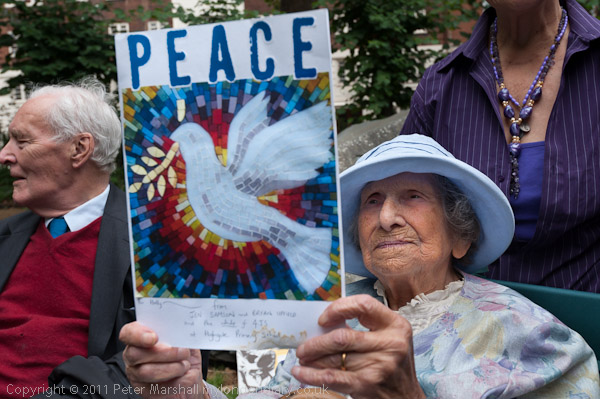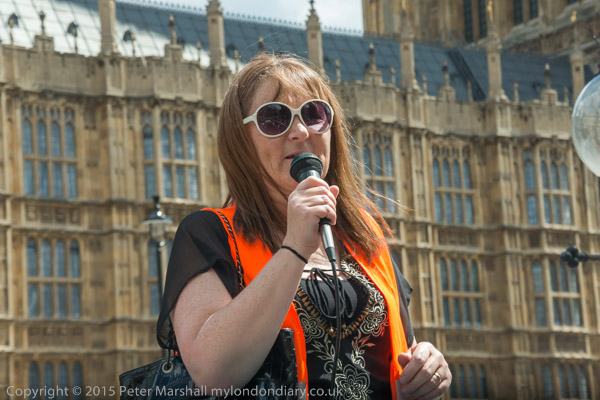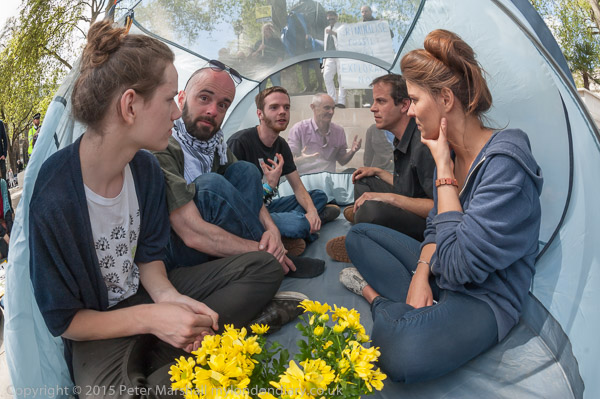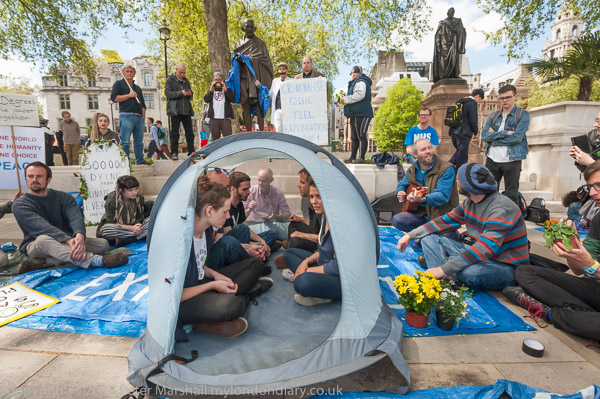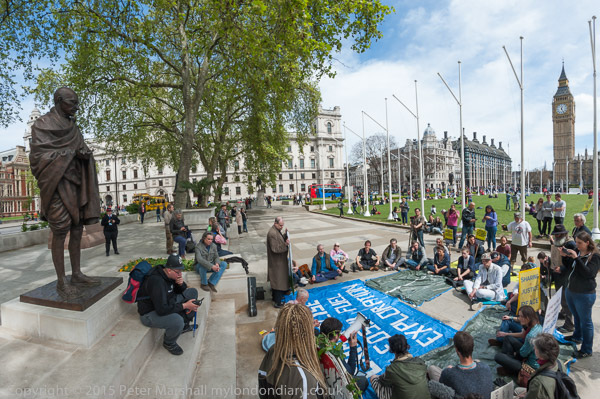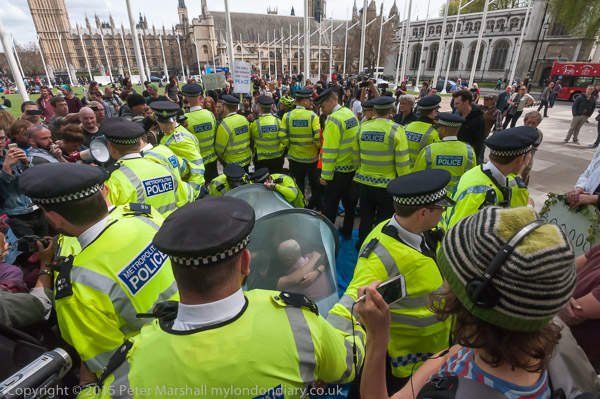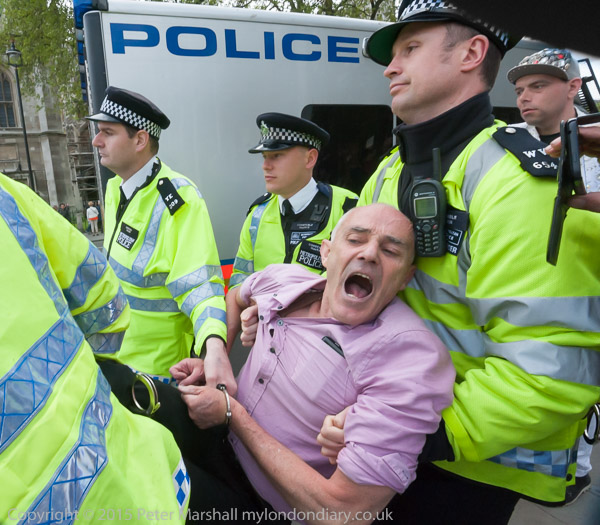CLASS WAR – Rich Door, Poor Door is a relatively cheap 48 page magazine style publication of my coverage of the protests by Class War at One Commercial St, a large block on the corner of Commercial St and Whitechapel High Street in Tower Hamlets on the eastern edge of the City of London.
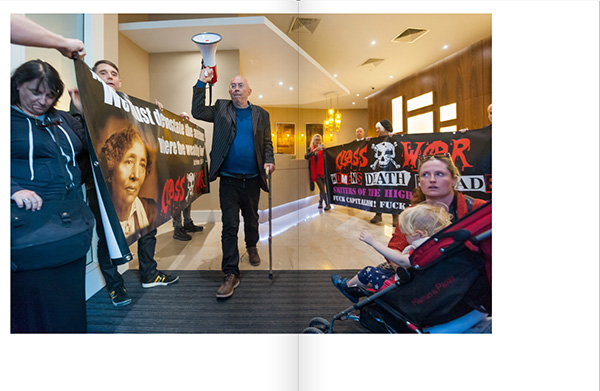
The building ‘One Commercial St’ is a tall block which includes shops, a hotel, an entrance to Aldgate East Underground station, parking and expensive flats as well as other flats which are social housing. While the occupiers of the expensive flats enter through a large, well lit lobby with a manned concierge desk and comfortable seating through a door on the main road, social housing tenants have a separate entrance some way down a narrow alley.
When I first visited it, this alley was strewn with rubbish and dog mess, with a strong smell of stale urine, and was virtually unlit, the kind of alley that drunks stumble down to relieve themselves after the pubs have closed. The ‘poor door’ had a card entry system, but for some weeks it was broken and the door left unlocked. It led onto a long narrow corridor, empty except for some post boxes for the residents.
The building manager told us that the social housing was completely physically separated from the privately owned flats, though we soon realised this was a lie. There are links between to two areas both at ground floor level and on at least one of the upper floors which both sets of flats occupy. Inside the building, when I later was taken around by a resident, the corridors and lifts were very similar, with identical signage. We went in the ‘rich door’ and came out after the tour through the ‘poor door’, having during the tour seen two locked doors between the two sides as well as walking through at ground level between them.
Having separate doors for rich and poor living in the same building is something many find unacceptable, and the protests by Class War served to publicise this ‘social apartheid’ and to put the issue on the national agenda, one of a number of direct action campaigns that have brought housing issues increased public attention. Some of those other campaigns supported Class War, with visits by supporters of Focus E15 and New Era, and Class War also supported others including the Aylesbury Estate Occupiers, with supporters also joining other housing campaigns.
During the roughly nine months covered by this magazine, from July 30, 2014 to May 1, 2015, Class War were also running a campaign to stand candidates in the May General Election. Eventually there were Class War candidates in seven seats, three in the Greater London area. Their first policy pledge was for a 50% mansion tax. Although I covered several events connected with their election campaign, including the manifesto launch at the gates of Buckingham Palace, I’ve not included these in the magazine, which includes pictures from 29 of the 31 protests at One Commercial St.
Several of the candidates were prominent in the protests, and one of the more controversial actions by the police was the seizing of their ‘political leaders’ banner which had been produced for the 2010 General Election and displayed at many events over the years without problems. A case for displaying a similar set of posters also produced in 2010 was thrown out of court for restricting freedom of expression. Class War responded with an updated version of the banner for 2015, which so far police have failed to seize.
Police made at least five arrests at the protests which are shown in the magazine. One case has still to come to court and another was dismissed when it did so, with the court clearly suggesting that the police were trying to restrict legitimate political protest. One other case still pending also seems to have been clearly politically motivated and will I hope be thrown out by the court if not dropped beforehand.
You can read the story of the campaign in the regular posts and pictures from it on My London Diary. In the magazine I’ve included the text from just the first of these which sets the scene along with a chronological selection of over 200 images from the protests. There are just a couple of very short comments and on the final page some biographical material.
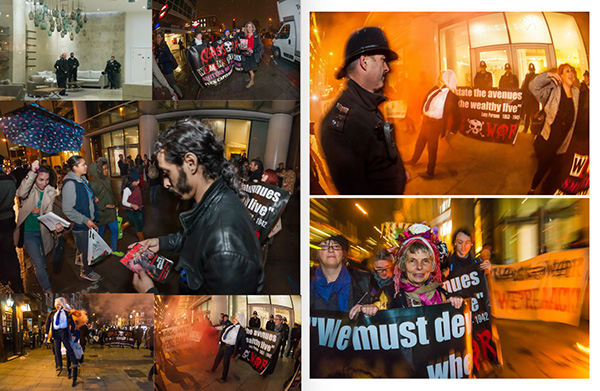
Getting over 200 images into 48 US letter size pages involved many compromises. There are a couple of images which have a double page spread and about 45 that are roughly half page size (about 8 x 5.5 inches.) The rest are crammed in at up to 8 pictures a page with little or no white space. I wanted to keep the price down so that I could offer this publication for a fiver.

For the same reason, I chose Blurb’s cheapest paper, which they say gives magazine quality reproduction. This is not the quality of a quality magazine – they call it Economy magazine. The reproduction lacks punch, with no real black, but even the smaller images are detailed and readable.
I’ve made over half the book viewable on the preview at Blurb. If you make the preview full-screen (button at bottom right of preview) you will get a rather better view than the actual magazine – much better, brighter and more accurate colour. But I’d like people to buy the magazine, though I make only a very small margin on it, as it would be good to get copies out there and perhaps seen by more people than would look at it on screen. You can of course already look at the pictures on My London Diary (I think there may be one or two where I’ve chosen slightly different images for the magazine.)
I’ve also decided not to make this publicly available as a PDF or e-book, unlike almost all of my other books. The cost of the ‘hard copy’ – actually a rather floppy soft-cover – is more or less the same.
The magazine CLASS WAR – Rich Door, Poor Door is for sale through Blurb, where it costs £6.00 plus carriage (I haven’t checked but probably an arm and a leg.) As with my other publications, UK readers can save by ordering direct from me – contact me here to check it is still in stock and arrange payment by cheque, bank transfer or PayPal. I can currently supply copies at £6 including UK postage. I think all my other books are also in stock here.
And for people I meet it’s a fiver if I’ve got a copy on me. The price of a pint in some London pubs these days.
